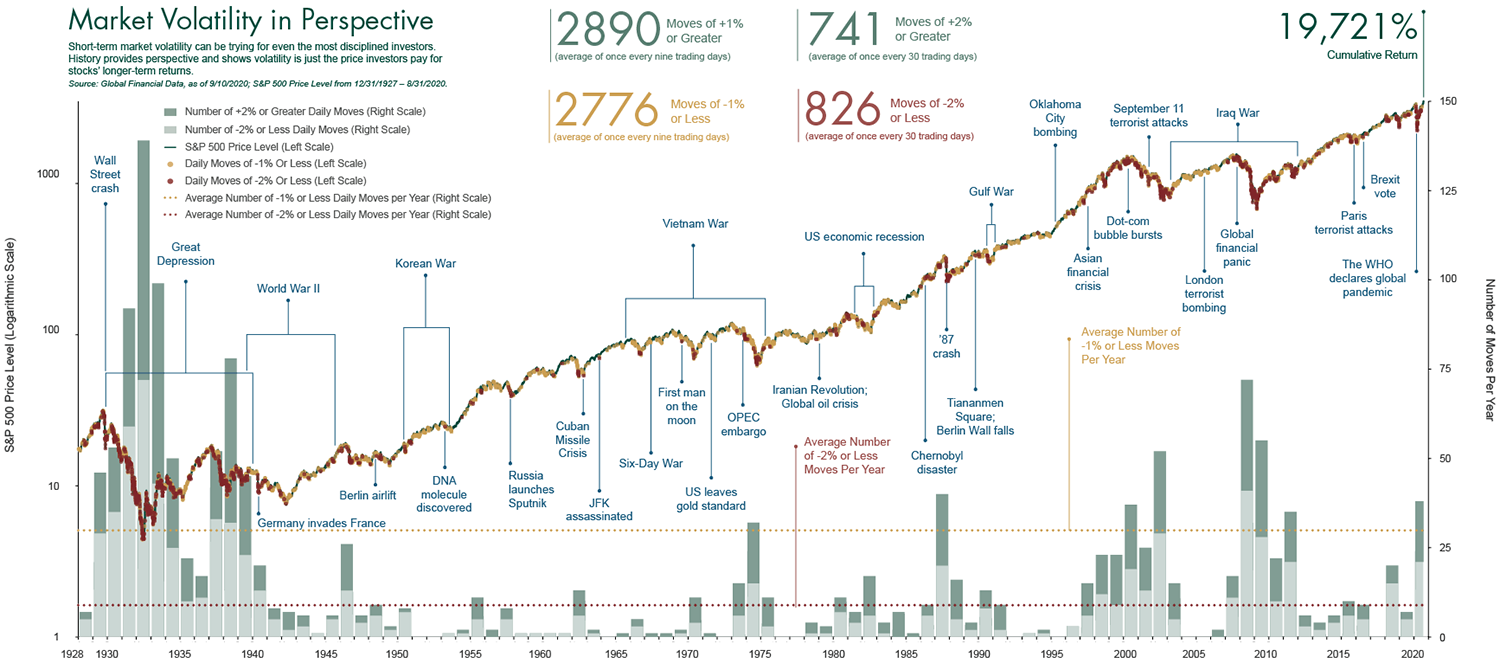Tariff Volatility: A Home And Global Perspective (FP Video)

Table of Contents
The Domestic Impact of Tariff Volatility
Tariff volatility significantly impacts domestic economies, affecting consumers and businesses in various ways.
Increased Prices for Consumers
Tariffs, essentially taxes on imported goods, directly increase the price consumers pay. This is because the cost of the tariff is passed on from the importer to the retailer and ultimately to the consumer. For example, tariffs on imported steel can lead to higher prices for automobiles, appliances, and construction materials. Similarly, tariffs on imported consumer electronics can make those products less affordable.
- Reduced consumer purchasing power: Higher prices leave consumers with less disposable income, impacting overall spending and economic growth.
- Inflationary pressures: Widespread tariff increases can contribute to general inflation, eroding the value of money.
- Potential for decreased consumer confidence: Uncertainty about future prices due to tariff volatility can lead to decreased consumer confidence and reduced spending.
Challenges for Domestic Businesses
Domestic businesses, particularly those relying on imported raw materials or components, face significant challenges due to tariff volatility. Unpredictable tariff changes make it difficult to accurately forecast costs and set prices, impacting profitability. Moreover, increased production costs reduce competitiveness in global markets.
- Increased production costs: Tariffs on imported inputs directly increase the cost of production for many businesses.
- Difficulty in forecasting and planning: The unpredictable nature of tariffs makes long-term planning and investment decisions significantly more difficult.
- Loss of market share to foreign competitors: Higher prices due to tariffs can make domestic businesses less competitive against foreign companies that don't face the same tariffs.
Job Creation and Displacement
The impact of tariff volatility on employment is complex. While some domestic industries might experience job growth due to increased protection, others heavily reliant on imports may suffer job losses.
- Sector-specific job losses: Industries heavily dependent on imported goods may see job losses due to reduced production or higher prices.
- Potential for growth in specific domestic industries: Tariffs can protect and encourage growth in domestic industries that compete with imports.
- The need for worker retraining and adaptation: Shifts in employment due to tariff volatility necessitate programs for worker retraining and adaptation to new industries.
The Global Impact of Tariff Volatility
The effects of tariff volatility extend far beyond national borders, disrupting global trade and impacting international relations.
Disruption to Global Supply Chains
Global supply chains are intricately interconnected. Tariffs disrupt this flow, causing delays, increased costs, and uncertainty. For example, tariffs on components from one country can halt production lines in another, affecting industries worldwide.
- Delays in production: Tariffs can lead to delays in the delivery of raw materials and components, disrupting production schedules.
- Increased shipping costs: Businesses may need to find alternative, more expensive shipping routes to avoid tariffs.
- Uncertainty for businesses relying on global trade: The unpredictable nature of tariffs creates significant uncertainty for businesses that rely on international trade.
Geopolitical Tensions and Trade Wars
Tariffs are often used as instruments in international relations and trade disputes. The imposition of tariffs by one country often leads to retaliatory tariffs by others, escalating trade tensions and potentially leading to trade wars.
- Escalation of trade tensions: The use of tariffs as a retaliatory measure can significantly escalate trade disputes.
- Retaliatory tariffs: Countries often respond to tariffs imposed by other nations with their own tariffs, creating a cycle of protectionism.
- Negative impact on global economic growth: Trade wars and tariff volatility significantly hinder global economic growth by disrupting trade and investment flows.
Impact on Developing Economies
Developing economies are particularly vulnerable to tariff volatility. They often rely heavily on exports, and tariff increases in developed countries can significantly reduce their export opportunities, hindering economic growth and potentially increasing poverty.
- Reduced export opportunities: Tariffs in developed countries can severely limit export opportunities for developing nations.
- Increased poverty: Reduced export opportunities can lead to job losses and increased poverty in developing countries.
- Limited access to essential goods: Tariffs can increase the cost of essential goods, making them less accessible to vulnerable populations.
Mitigating the Effects of Tariff Volatility
Addressing the challenges of tariff volatility requires a multifaceted approach involving businesses, governments, and international cooperation.
Diversification of Supply Chains
Businesses can mitigate the risks of tariff volatility by diversifying their supply chains. This reduces reliance on single sources and provides flexibility in responding to tariff changes.
- Sourcing from multiple countries: Businesses can reduce their risk by sourcing materials and components from multiple countries.
- Establishing regional production hubs: Establishing production facilities in multiple regions can reduce dependence on a single location.
- Building strategic partnerships: Collaborating with suppliers and distributors can help businesses navigate supply chain disruptions.
Government Policies and Regulations
Governments play a crucial role in mitigating the impact of tariff volatility. Policies aimed at supporting domestic industries, promoting trade diversification, and fostering international cooperation can help to reduce the negative impacts.
- Trade agreements: Negotiating trade agreements that promote free and fair trade can reduce the risk of protectionist measures.
- Subsidies and tax breaks: Governments can provide subsidies and tax breaks to businesses to help them offset the increased costs of tariffs.
- Investment in domestic industries: Investing in domestic industries can help create jobs and reduce reliance on imports.
Predictive Analytics and Risk Management
Utilizing data analytics and developing effective risk management strategies are crucial for anticipating and preparing for tariff changes.
- Monitoring global trade policies: Businesses need to closely monitor global trade policies and anticipate potential changes.
- Scenario planning: Developing contingency plans for different tariff scenarios can help businesses prepare for unforeseen events.
- Development of contingency plans: Having backup plans for sourcing materials, production, and distribution can minimize disruptions.
Conclusion
Tariff volatility presents significant challenges to both domestic and global economies. Understanding its impact on consumers, businesses, and global supply chains is crucial for navigating the uncertainties of the modern trading environment. By diversifying supply chains, implementing effective risk management strategies, and advocating for sound government policies, we can mitigate the negative effects of tariff volatility. Staying informed on global trade developments and understanding the implications of tariff changes is essential for businesses and consumers alike. Continue to learn more about the complexities of tariff volatility and its impact on your world by exploring further resources on this critical topic. Don't get caught off guard – stay ahead of the curve by researching and understanding tariff fluctuations and their implications for your business and your bottom line.

Featured Posts
-
 Stolen Dreams A Restaurant Owners Fight For Justice And Compensation
May 19, 2025
Stolen Dreams A Restaurant Owners Fight For Justice And Compensation
May 19, 2025 -
 Orlandos Culinary Scene How Public Funding Cultivated A Foodie Paradise
May 19, 2025
Orlandos Culinary Scene How Public Funding Cultivated A Foodie Paradise
May 19, 2025 -
 Braves Fight For The Nl East A Realistic Look At Their Playoff Odds
May 19, 2025
Braves Fight For The Nl East A Realistic Look At Their Playoff Odds
May 19, 2025 -
 Rylan Clarks Cinderella Pantomime Role At Cliffs Pavilion Confirmed
May 19, 2025
Rylan Clarks Cinderella Pantomime Role At Cliffs Pavilion Confirmed
May 19, 2025 -
 The Car Industrys Growing Resistance To Ev Sales Targets
May 19, 2025
The Car Industrys Growing Resistance To Ev Sales Targets
May 19, 2025
